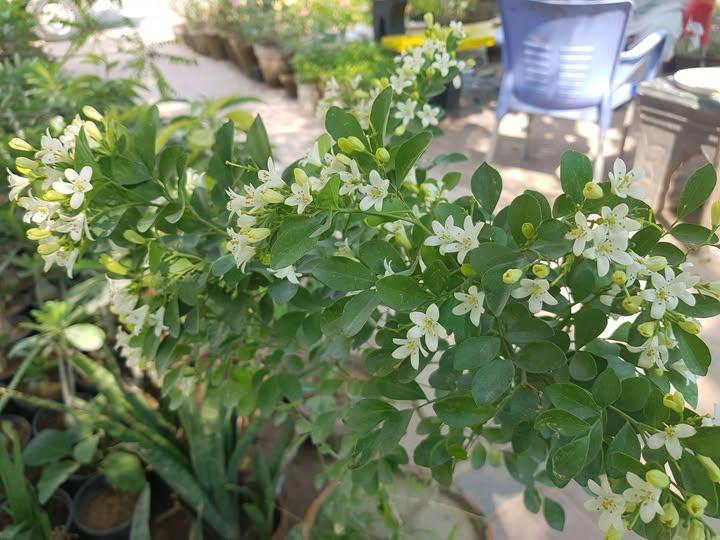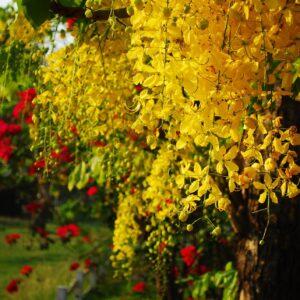Marwa Plant “Origanum majorana– The Sweet Fragrant Herb
The marwa plant, sometimes known as sweet marjoram, is a low-growing perennial herb that is valued for its aromatic leaves, culinary applications, and therapeutic properties. It thrives in warm, sunny climates and is well-liked in containers, herbal beds, and home gardens because it is native to the Mediterranean.
It resembles oregano, but its flavor is sweeter and more delicate, and its growth pattern is soft and bushy, making it ideal for both culinary and decorative purposes.
🌿 Overview of Botany
Origanum majorana is the scientific term.
Common names: Sweet Marjoram, Marwa, Marjoram
Family: Lamiaceae (Mint family)
Perennial herb type (frequently produced as annual in cold regions)
Height: 1-2 feet (30-60 cm)
Range: 12–18 inches
Leaves: Velvety feel, tiny, oval, gray-green in color
Flowers: little, white or light purple, grouped together at the ends of the stems
Smell: Herbal, sweet, and potent (like oregano, but less so)
Sunshine and Climate Requirements
Sunshine:
Needs direct sunlight for 6–8 hours per day
Partial shade is acceptable, but the fragrance is diminished.
Temperature:
Grows best between 15°C and 30°C
Frost-sensitive; bring indoors or protect during the winter.
USDA zones 9 through 11 are considered hardiness zones (treated as an annual in colder zones).
Perfect for tropical and subtropical climates, especially in herb gardens and bright balconies.
💧 Watering Schedule
Plants in their infancy:
When planting, water every two to three days.
Maintain consistent soil moisture
Adult plants:
Depending on the weather, water once or twice per week.
Let the topsoil to dry in between waterings
💧 Root rot is brought on by excessive watering; always use soil with good drainage.
Requirements for soil
Kind:
loamy, sandy, or light soil is preferred
Must drain properly
pH: Between neutral and moderately alkaline (6.5–7.5).
Enrichment:
At planting, add compost or organic manure.
Stay away from dense clay or compacted soils
Wonderful for pots, elevated beds, and mixed herb containers.
What kind of fertilizer is necessary?
Regular Feeding:
Use diluted liquid fertilizer every 4–6 weeks for light feeders.
Excessive eating lowers the intensity of the taste
For culinary herbs like marwa, vermicompost or organic compost are the best options.
Pruning and harvesting are performed in this manner.
Pruning:
To promote dense growth, pinch or trim often.
Cut off flower buds to increase leaf production.
Harvesting:
Once the plant is at least six inches in height, you may select leaves at any time.
It is best to harvest in the morning, when the oils are at their highest concentration.
Leaves can be stored dry or fresh.
Frequent trimming enhances taste and output.
Ways of Propagation
Seeds:
Plant the seeds inside 6–8 weeks prior to transplanting.
It takes 7 to 14 days for germination.
Stem cuttings:
Cut 4–6 inch pieces from good branches
Root in water or a moist soil mixture
Division:
Every two to three years, mature clumps can be divided.
🌱 The quickest and most dependable way to reproduce plants is through cuttings.
🐛 Illnesses and pests
Typical pests include:
Aphids
Spider mites
Whiteflies
Illnesses:
powdery mildew (when there is a lot of humidity)
root rot caused by excessive watering
Use insecticidal soap or neem oil. Make sure there is adequate sunlight and ventilation.
Uses and Advantages
Culinary:
It’s used in soups, meat dishes, sauces, and stews.
Oregano is milder and perfect for herbal teas and salads.
Medicinal:
Used in the past to treat coughs, bloating, indigestion, and anxiety
Includes anti-inflammatory and antioxidant substances
Decorative:
Appealing in pots, borders, and herb spirals
Aromatic complement to balconies and patios
✅ Summary
A fragrant, easy-to-grow herb called the Marwa plant (Origanum majorana) adds taste to your cuisine and tranquility to your yard. It enhances beauty and usefulness whether it is cultivated in a pot, herb bed, or boundary. Marwa grows well with little sunshine, adequate drainage, and minimal maintenance, giving you a constant supply of therapeutic, fragrant leaves in return.”
Tree
Marwa
₨400.00
“Sweet Marjoram, also known as Marwa Plant (Origanum majorana), is a fragrant, shrubby plant in the mint family that is closely related to oregano. It is recognized for its tiny, oval, gray-green leaves and lovely white or pinkish blooms. Marwa, which is indigenous to the Mediterranean, is used in traditional medicine, herbal teas, and cooking.
The plant is frequently cultivated in pots or herb gardens and prefers well-drained soil and full sunlight. Its calming, digestive, and anti-inflammatory effects are highly appreciated, and it has a pleasant, somewhat spicy scent.
.”





Reviews
There are no reviews yet.